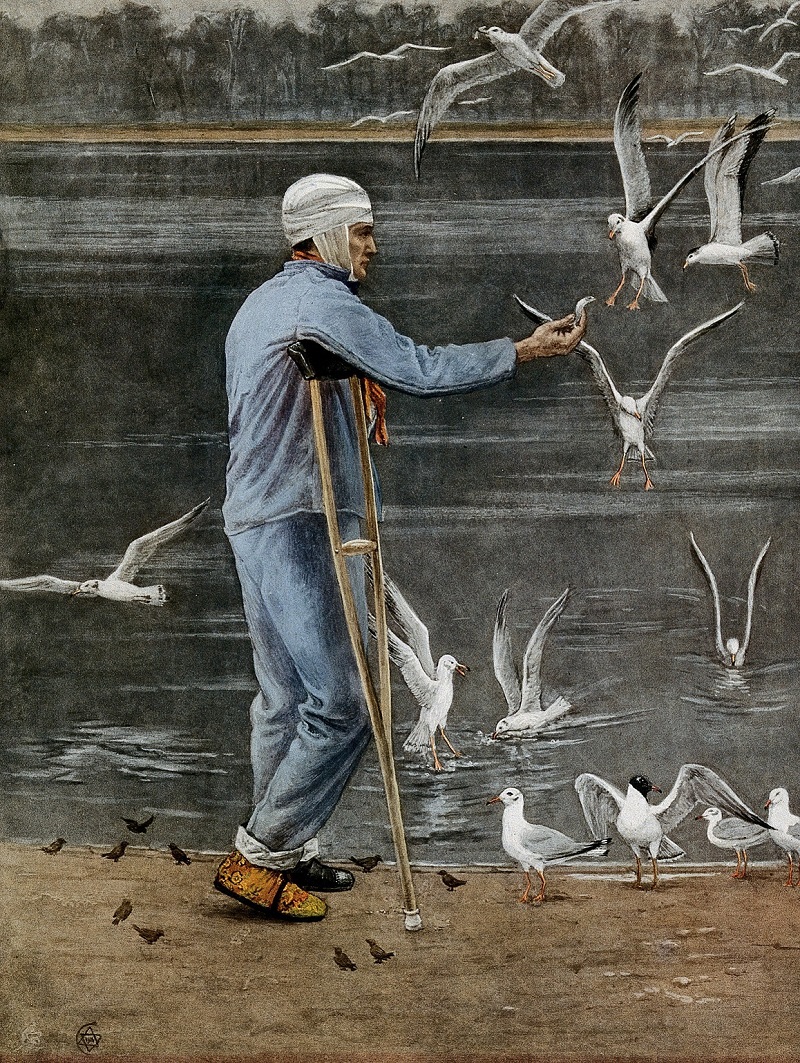The blue badge of courage, after E. Canziani, ca. 1917 Credit: Wellcome Collection. Attribution 4.0 International (CC BY 4.0)
As we reflect on the 104th anniversary of the Battle of the Somme, sources from the archive reveal a controversial medical debate about shell shock: was it caused by physical injury, or was there a psychological cause?
When the first cases of shell shock started to arrive at French field hospitals in the winter of 1914 – 1915 this mysterious affliction of modern warfare was so novel it didn’t have a name yet. Within the army it became known as shell shock, a term later introduced into medical literature by the psychologist, Captain Charles Myers.
Although Myers soon came to regret coining the name ‘shell shock’ due to its imprecision as a medical term, the name stuck in medical literature and the public imagination.
In July 1916, with the start of the Battle of the Somme, the incidence of shell shock dramatically increased. By the end of the four month offensive about 420,000 British and Commonwealth soldiers had been killed or wounded. A review of patient records from the National Hospital for Neurology and Neurosurgery shows that earlier in the war, soldiers diagnosed with shell shock were evacuated back to the UK but that after the Somme expediting soldiers back to the front line was prioritised.

